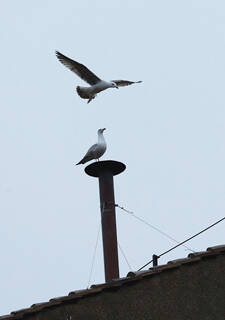It wasn’t long before millions watching online live streams of the Vatican chimney on March 13 noticed a bird perched atop the chimney over St. Peter’s Basilica, as they waited for the white smoke that signals the election of a new pope. In just a few minutes, “seagull” was a trending topic on Twitter, and at least a handful of Twitter accounts had been set up for the bird, with @SistineSeagull attracting over 8,000 followers, joining @ConclaveChimney with nearly 10,000 followers of its own.
The now famous seagull is just one small example of the role social media played in connecting Catholics around the world to the historic election of Pope Francis. Christopher Hale, co-founder of the online journal Millennial, said that social media allows Catholics in their 20s and 30s to express the views of a demographic that the secular press sometimes ignores.
“They say that we don’t care about religion; we hate religion; we ignore religion. That’s not true. Social media offers a new narrative that is reflective of the actual situation,” he said. Hale says that most his followers on Twitter are not Catholic, but “based on the feedback I was getting, it was clear that this was not just a Catholic event, but a human event, a world event. There is something mysterious about our faith tradition that draws young people to it.”
Leading up to the conclave, several American cardinals tweeted updates that fueled the papal speculation and led, in part, to the media blackout in the days before the conclave began. On the final day of the conclave, Twitter reported that users posted about 130,000 tweets per minute, causing, for a time, every worldwide trending topic to be pope-related. Facebook users got in on the action too, propelling “Pope” and “Vatican” to trending topics on that platform.
Of course, not all comments about the church on social media are glowing. Maura Lafferty, a social media consultant who volunteers for the Archdiocese of San Francisco’s Young Adult Council, says the church must become more adept at addressing social media’s high-speed negativity. Church leaders must learn “how to navigate the messaging” around “challenging questions,” she said. “They need to understand how to frame issues that won’t lead to a rush of criticism.”
Though the Twitter account of St. Peter, @Pontifex, was vacant following Benedict XVI’s resignation last month, it was back soon after the conclave reached a decision with the first tweet: “HABEMUS PAPAM FRANCISCUM.” The message was retweeted over 70,000 times.







